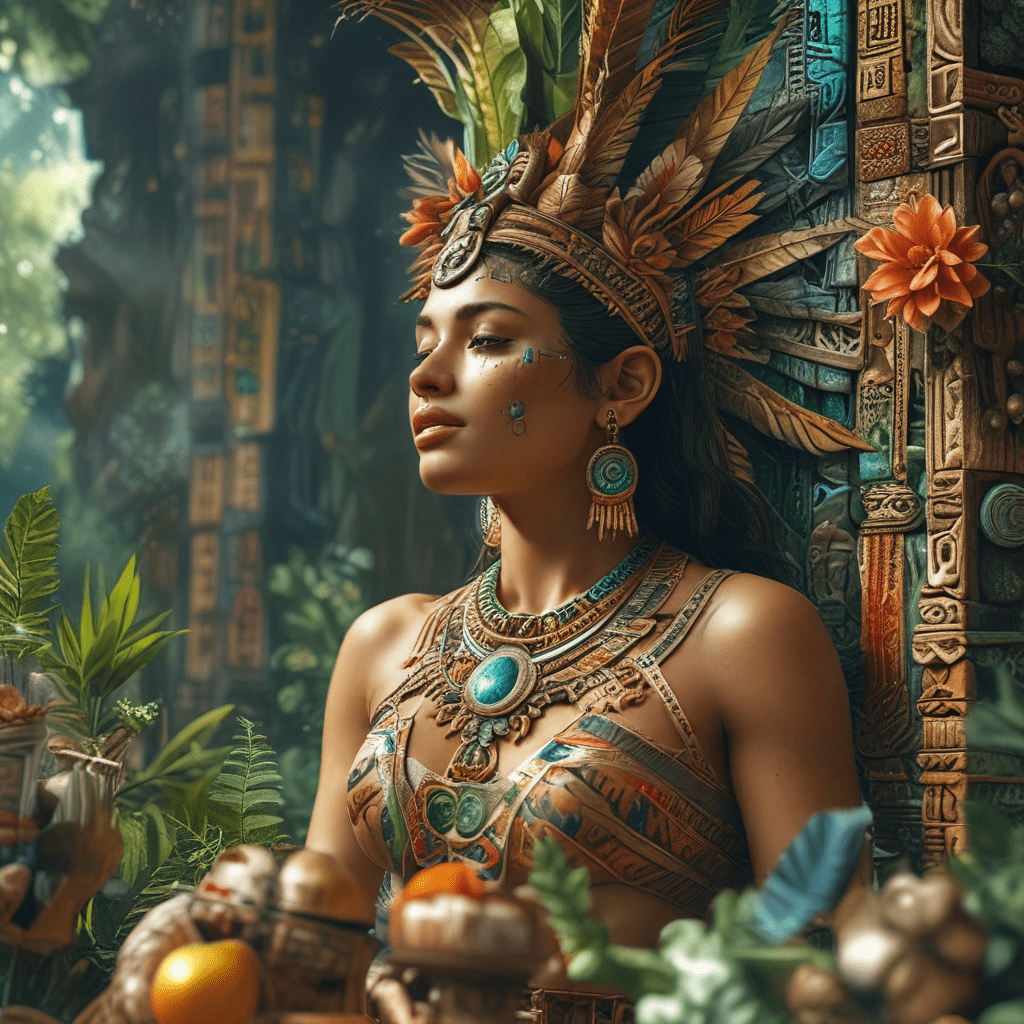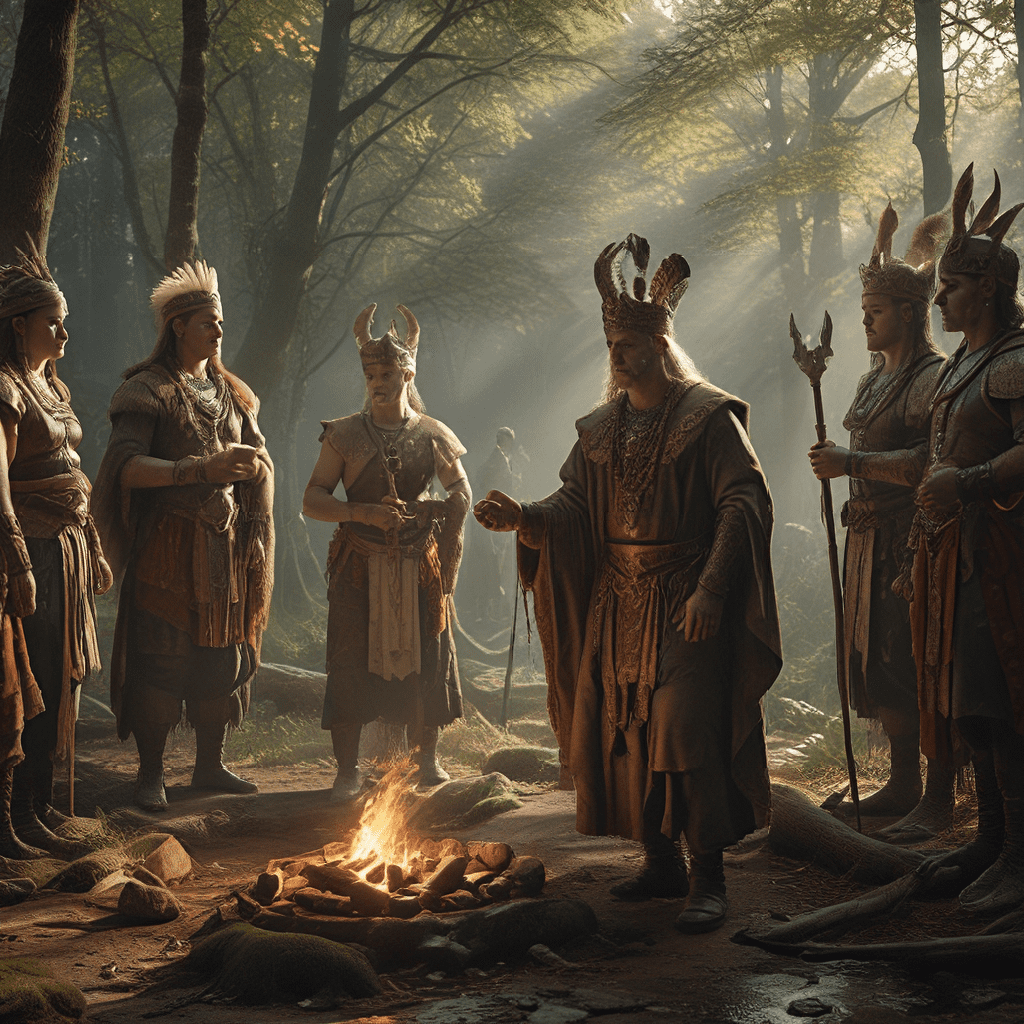Mayan Mythology and the Art of Herbal Medicine
1. Introduction: Exploring the Intersection of Myth and Medicine
For millennia, humans have sought understanding and remedies for illness and disease. In many cultures, mythology and medicine have intertwined, weaving narratives around the origins of ailments and the powers of healing. The ancient Maya civilization in Mesoamerica is no exception. Their rich mythology offers profound insights into their beliefs about the human body, the natural world, and the forces that govern health and well-being.
This article delves into the fascinating intersection of Mayan mythology and the art of herbal medicine. We will explore their unique worldview, the roles of deities associated with healing, the significance of sacred plants, and the intricate practices employed by Mayan healers. By examining these elements, we gain a deeper appreciation for the holistic approach to health and healing that characterized Mayan society.
2. The Mayan Worldview: Connecting Humans, Nature, and the Divine
The Maya held a complex and interconnected view of the cosmos, where humans, nature, and the divine realm were intricately linked. They believed that illness and disease could result from an imbalance in these relationships, caused by factors such as disharmony with the natural world, angered deities, or malevolent spirits. To restore balance and promote healing, Mayan healers employed a combination of herbal remedies, rituals, and spiritual practices.
3. Mayan Gods and their Roles in Healing: From Itzamna to Ixchel
Mayan mythology features a pantheon of deities associated with various aspects of health and healing. Among the most important figures are:
- Itzamna: The creator god, often depicted as an old man with a reptilian snout, was associated with knowledge, medicine, and healing. He is believed to have bestowed the gift of medicinal plants upon humanity.
- Ixchel: The goddess of medicine, childbirth, and water, was invoked for protection against illness and for ensuring healthy pregnancies and deliveries.
- Yum Kaax: The god of maize and agriculture, played a crucial role in ensuring the health and prosperity of the Maya, as maize was their staple food source.
- Chac: The rain god, was believed to control the life-giving waters essential for agriculture and well-being.
4. Sacred Plants and their Significance in Mayan Medicine
The Maya possessed extensive knowledge of the medicinal properties of plants found in their environment. They believed that certain plants held sacred powers and used them in various healing rituals and remedies. Some of the most important medicinal plants included:
- Copal: This fragrant resin was burned in ceremonies to cleanse and purify the air, and was believed to have healing properties.
- Tobacco: Used in rituals and medicine, tobacco was believed to have both healing and psychotropic effects.
- Cacao: The seeds of the cacao tree were used to make a sacred drink believed to have medicinal and spiritual benefits.
- Petiveria alliacea: This pungent herb was used to treat a wide range of ailments, including wounds, infections, and headaches.
5. The Importance of Herbal Remedies in Mayan Culture
Herbal medicine played a central role in Mayan healthcare. Shamans, or traditional healers, possessed deep knowledge of medicinal plants and their uses. They prepared remedies for various ailments, including physical injuries, infections, and mental health issues. Herbal remedies were often combined with rituals and spiritual practices to promote holistic healing.
6. Traditional Practices and Rituals Associated with Healing
Beyond herbal remedies, Mayan healers employed a variety of traditional practices and rituals to promote healing. These practices often involved connecting with the spiritual realm and seeking guidance from the gods. Some common rituals included:
- Bloodletting: This practice involved drawing blood from the tongue or earlobes, often as an offering to the gods or to release harmful spirits from the body.
- Sweat baths: Sweat baths were used for purification and detoxification, and were believed to open the body's pores to allow healing energies to enter.
- Divination: Shamans used various methods of divination, such as casting bones or reading the patterns in smoke, to diagnose illnesses and determine the appropriate course of treatment.
- Offerings: Offerings of food, incense, or blood were made to the gods to appease them and seek their intervention in healing.
7. Shamans: The Bridge Between the Physical and Spiritual Realms
Shamans held a prominent position in Mayan society as intermediaries between the physical and spiritual realms. They were believed to possess special powers and knowledge, allowing them to communicate with the gods, diagnose illnesses, and perform healing rituals. Shamans often underwent rigorous training and initiation rituals to develop their abilities.
8. The Role of Dreams and Divination in Diagnosis and Treatment
Dreams played a significant role in Mayan medicine. Shamans believed that dreams could provide insights into the causes of illness and offer guidance for treatment. They also used various forms of divination, such as reading the patterns in animal entrails or casting stones, to diagnose illnesses and determine the appropriate course of treatment.
9. The Legacy of Mayan Herbal Medicine: Modern Applications and Insights
The legacy of Mayan herbal medicine continues to inspire modern researchers and practitioners. Many of the plants used by the Maya have been shown to possess potent medicinal properties, and some are still used in traditional medicine today. Modern scientific studies are exploring the potential of these plants for treating various ailments, including cancer, diabetes, and infections.
10. Conclusion: A Holistic Approach to Health and Wellbeing
Mayan mythology and the art of herbal medicine offer a fascinating glimpse into a holistic approach to health and wellbeing. The Maya believed that physical, mental, and spiritual well-being were interconnected, and their healing practices reflected this belief. Their use of herbal remedies, rituals, and spiritual practices aimed to restore balance and harmony within the individual and their relationship with the natural world. This holistic approach to health continues to hold relevance today, offering valuable insights for modern healthcare practices.
FAQ
What are some of the most common illnesses treated by Mayan healers?
Mayan healers treated a wide range of ailments, including physical injuries, infections, mental health issues, and chronic conditions. They also provided care for women during pregnancy and childbirth.
How effective were Mayan herbal remedies?
Many of the plants used by Mayan healers have been shown to possess potent medicinal properties. Modern scientific studies are exploring the potential of these plants for treating various ailments.
Do Mayan healing practices still exist today?
Yes, Mayan healing practices continue to be practiced in many indigenous communities in Central America. Some modern practitioners have also incorporated elements of Mayan medicine into their practices.
Where can I learn more about Mayan mythology and herbal medicine?
There are many resources available online and in libraries about Mayan mythology and herbal medicine. You can also visit museums and cultural centers that focus on Mayan history and culture.


